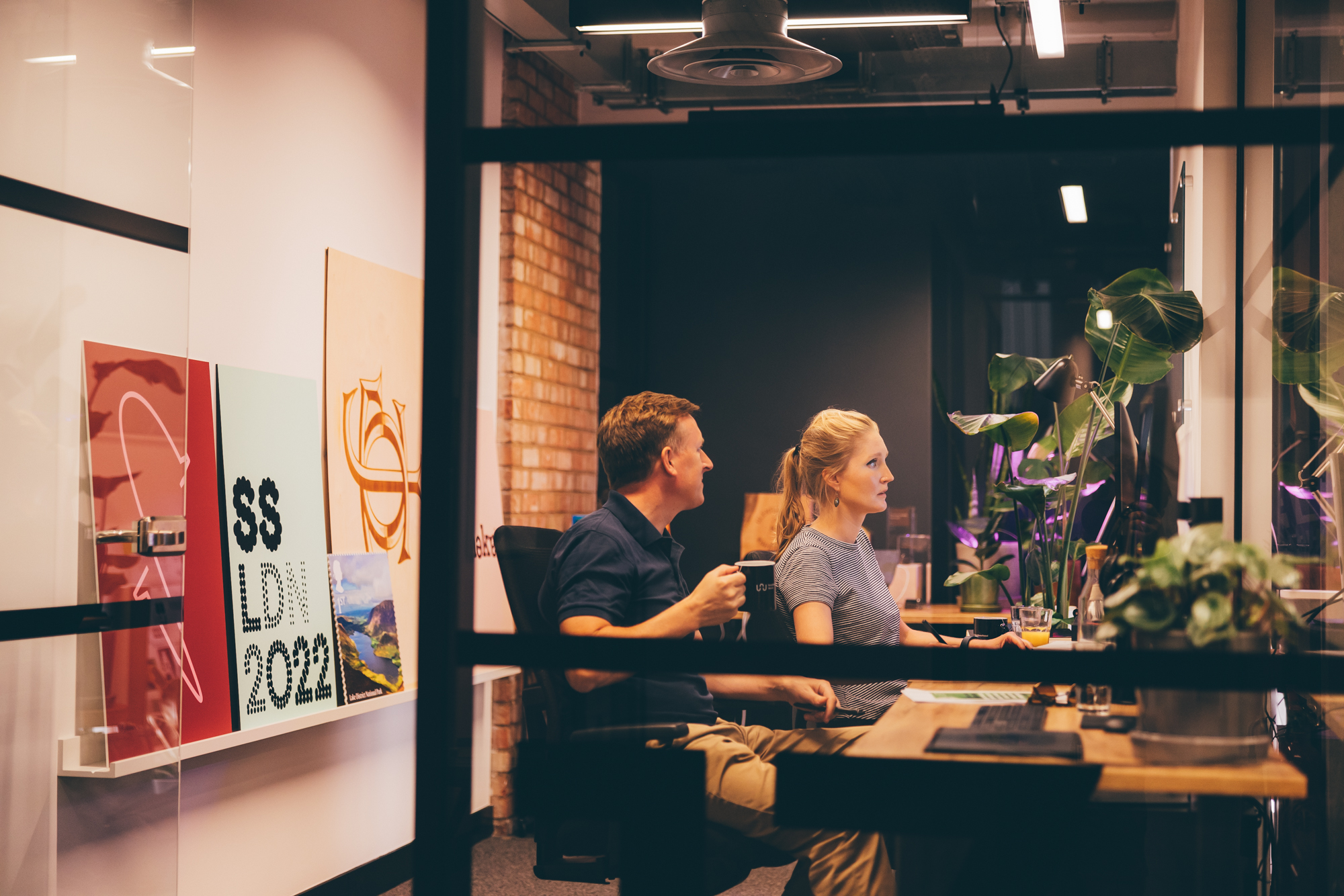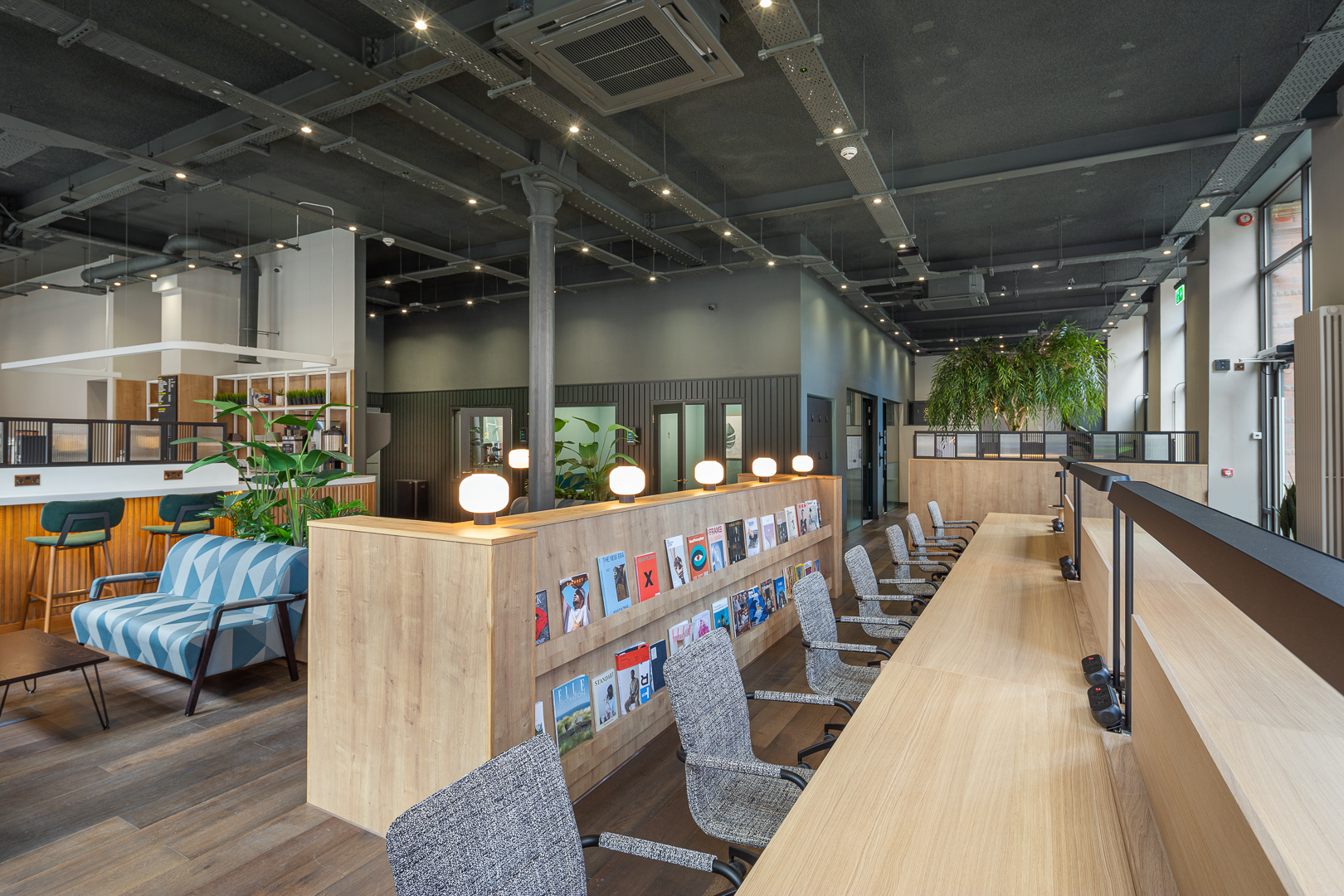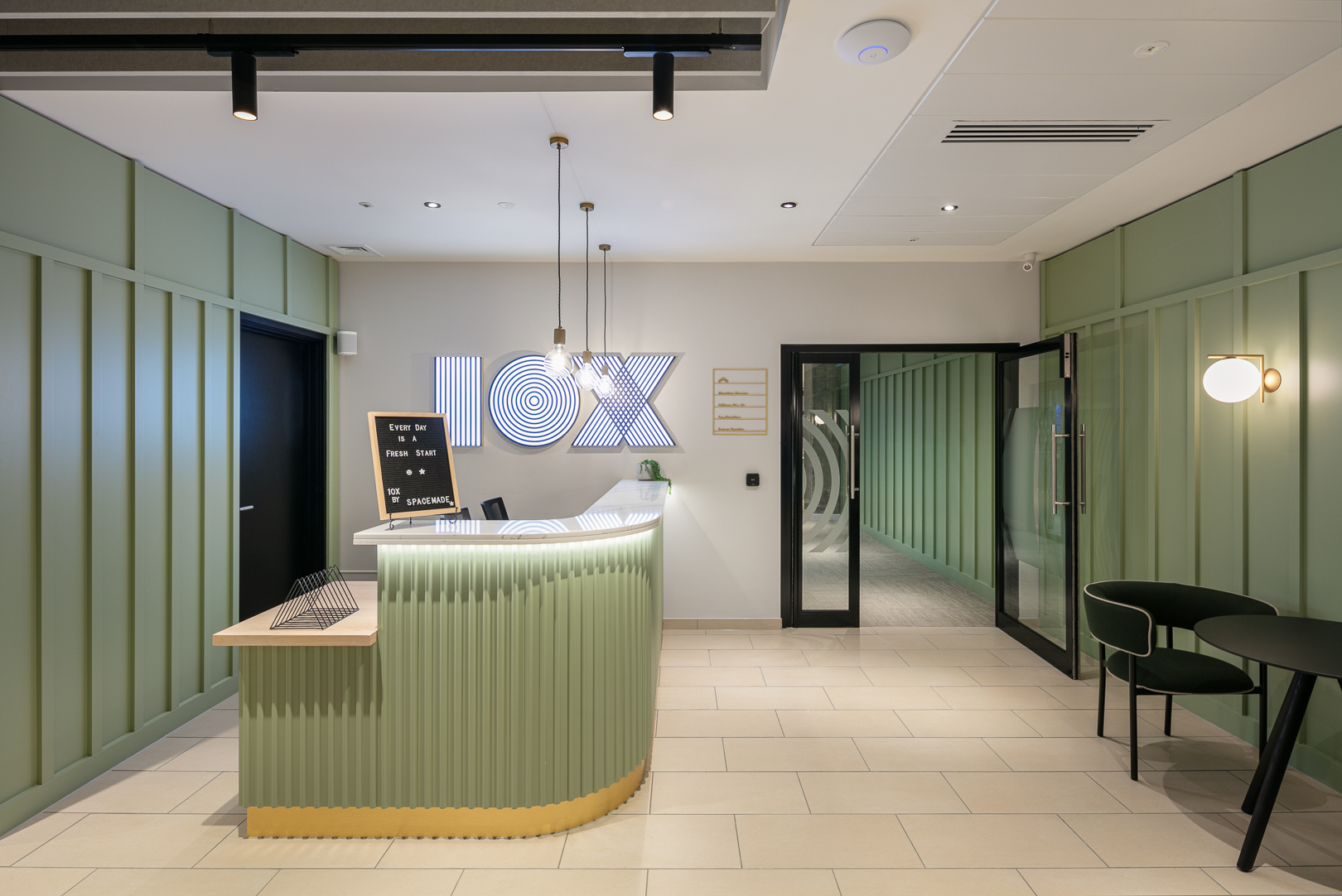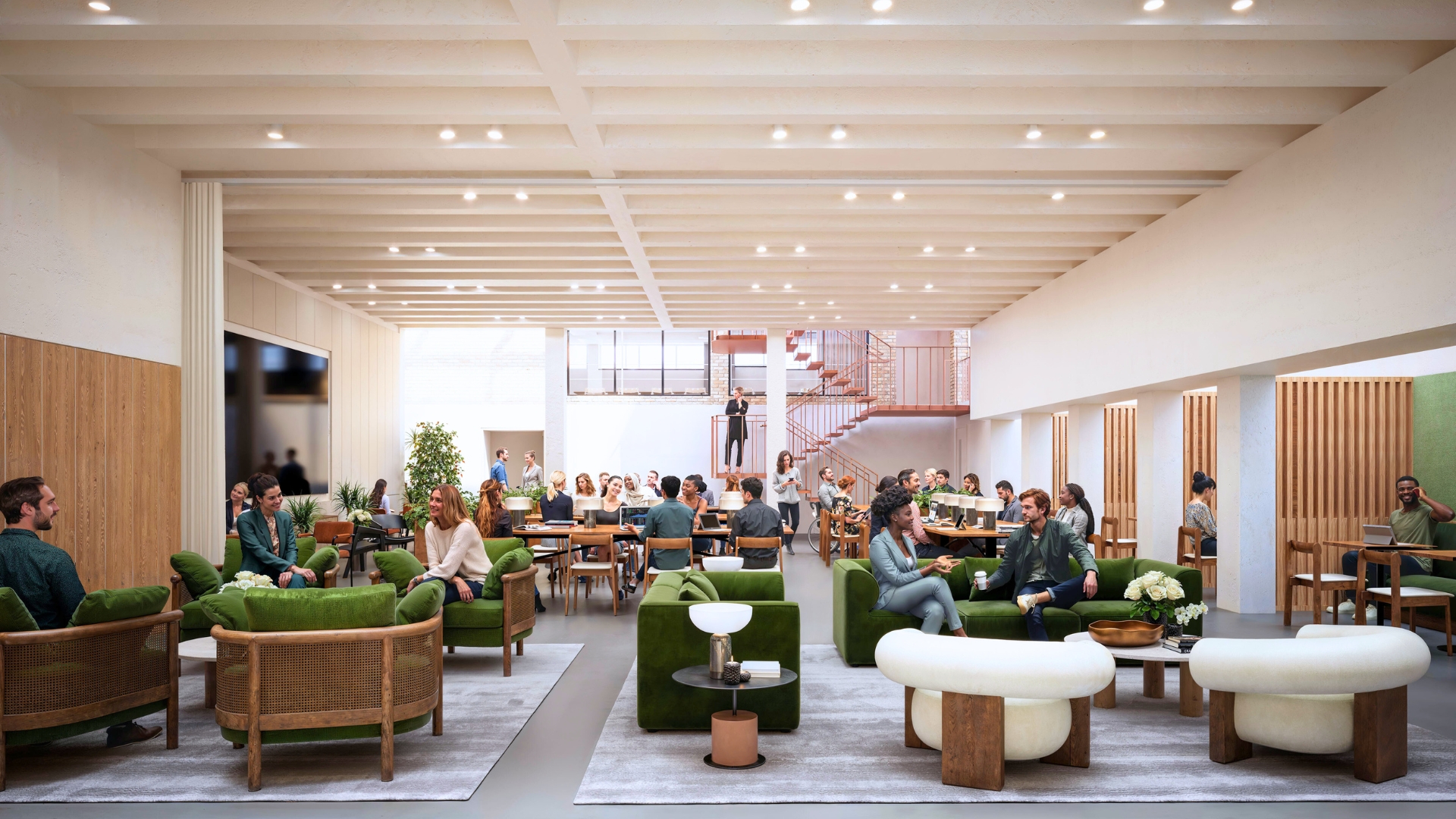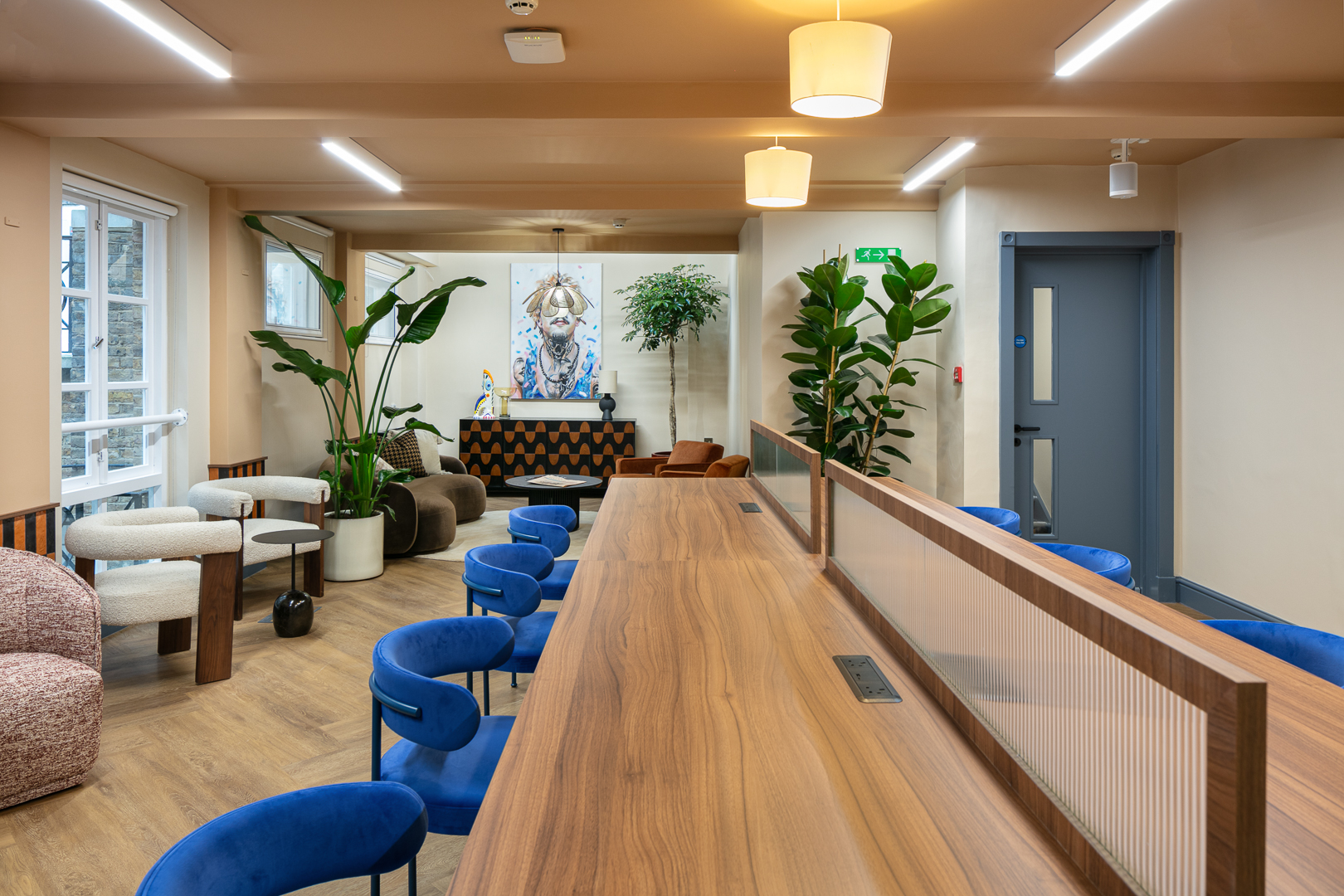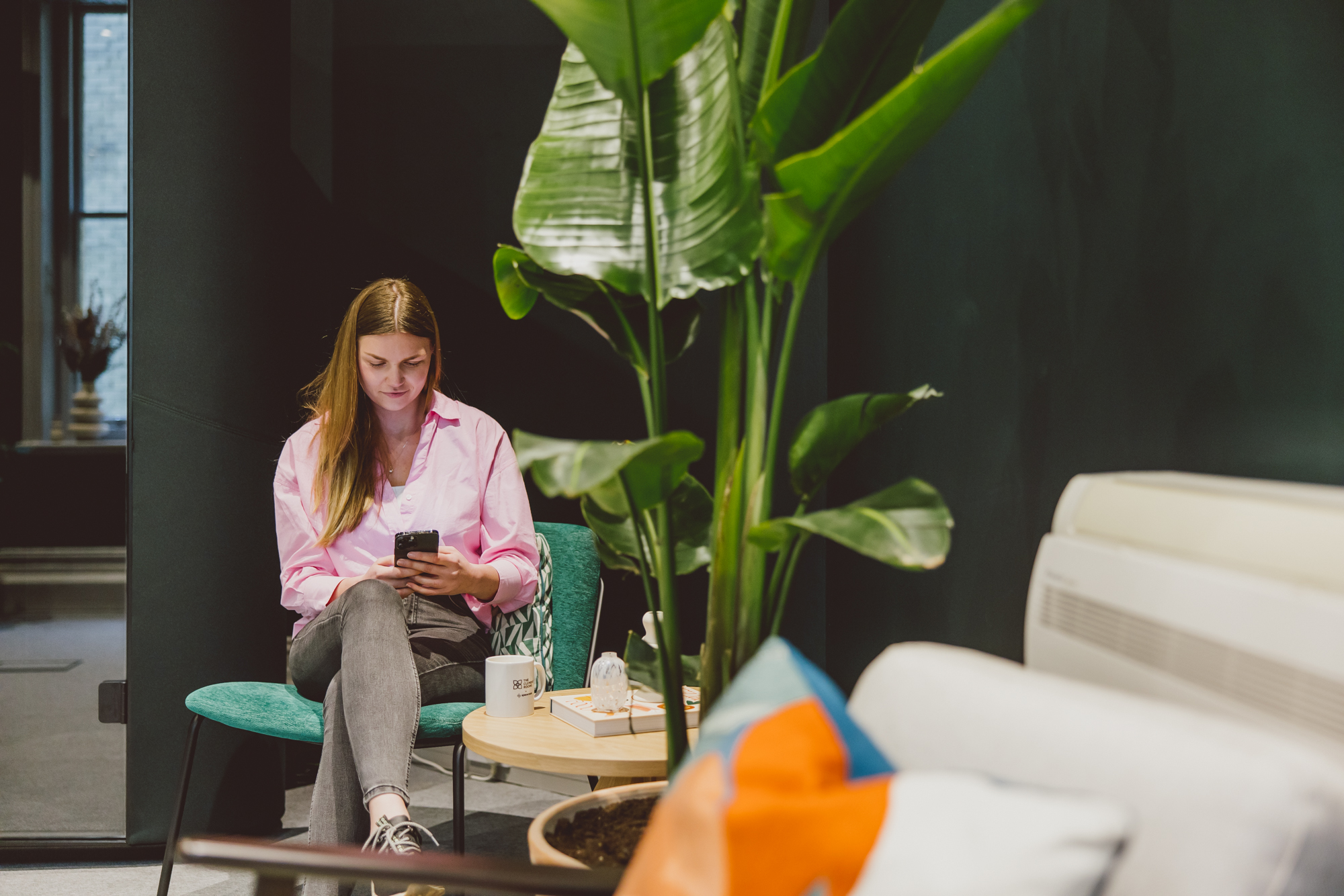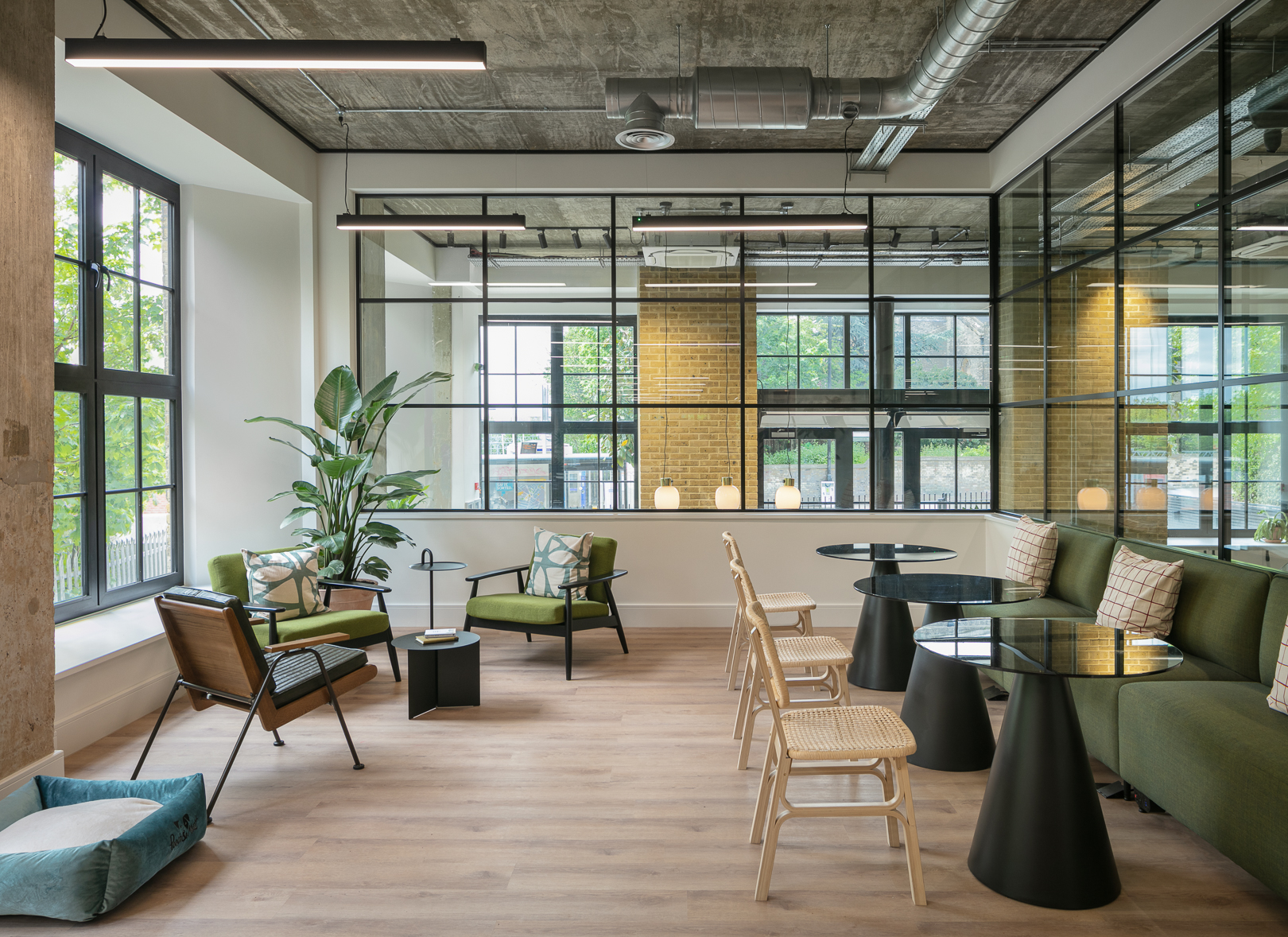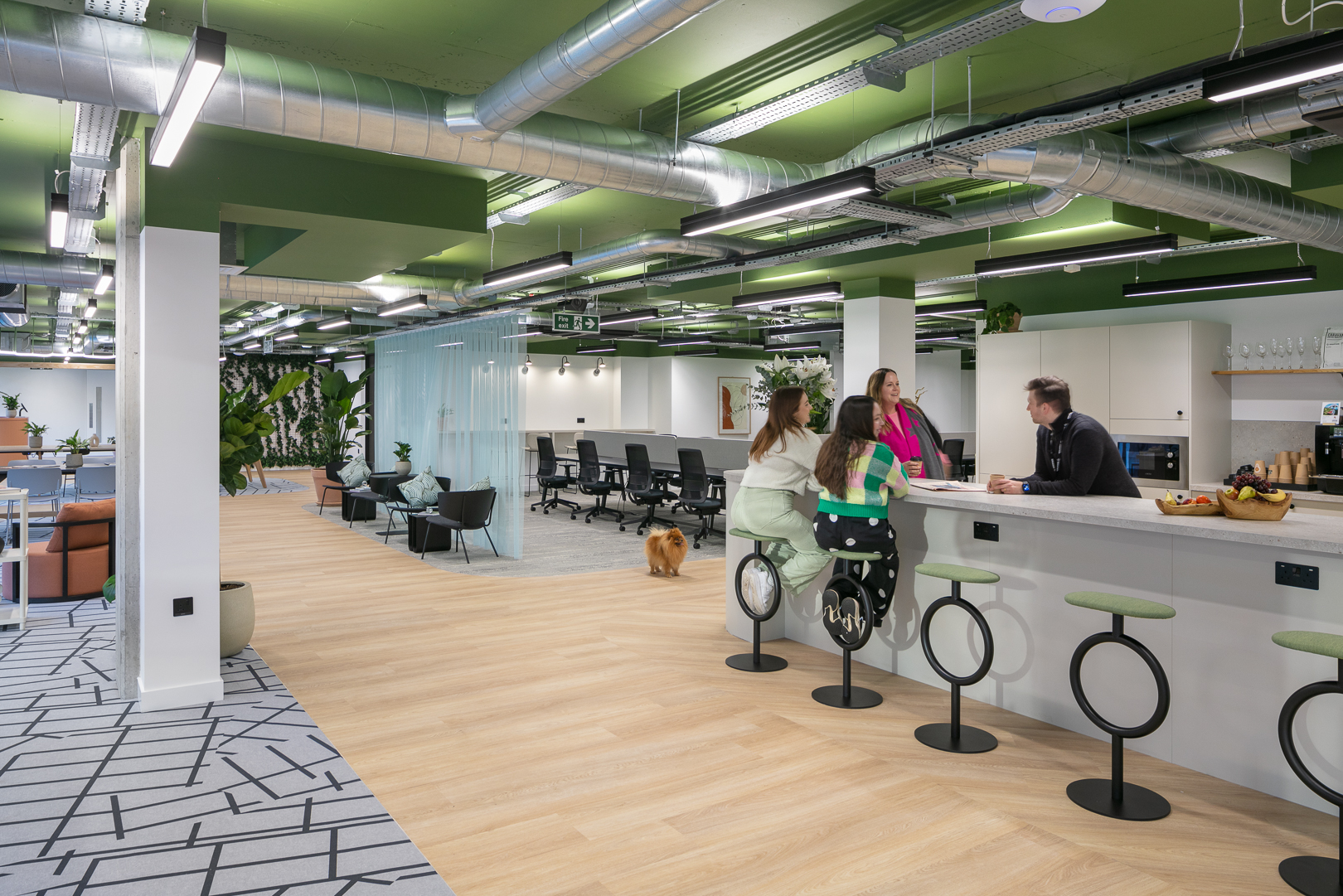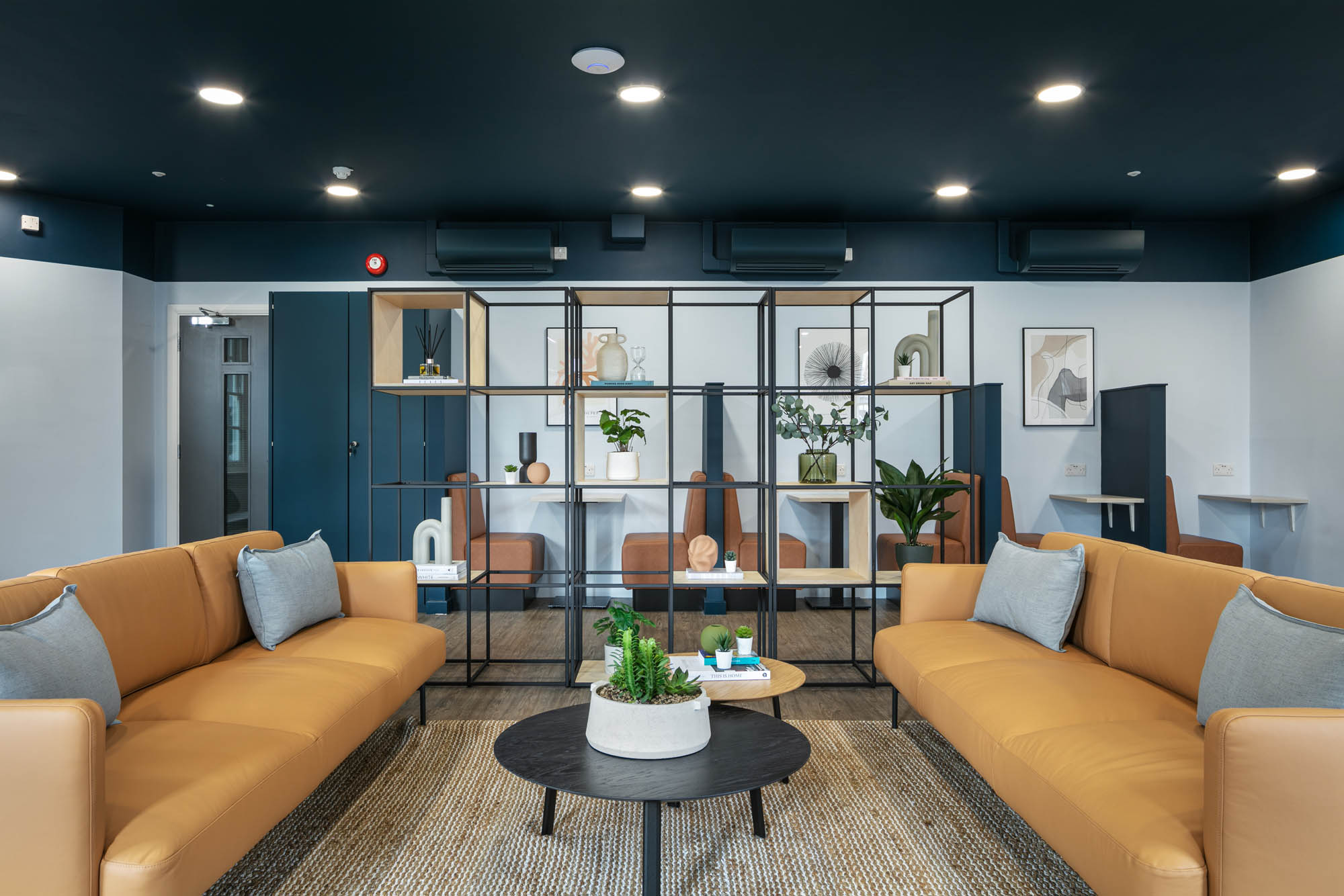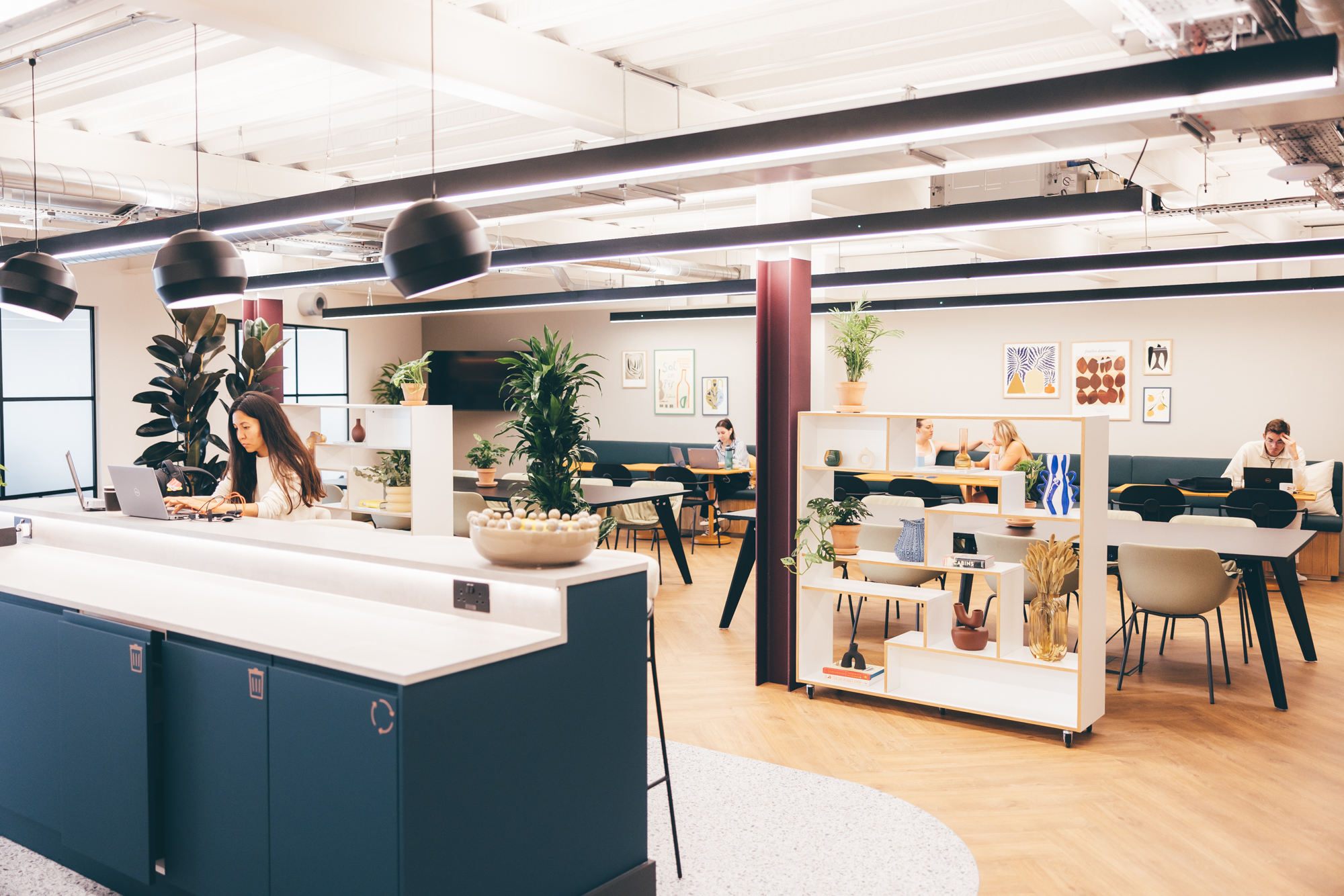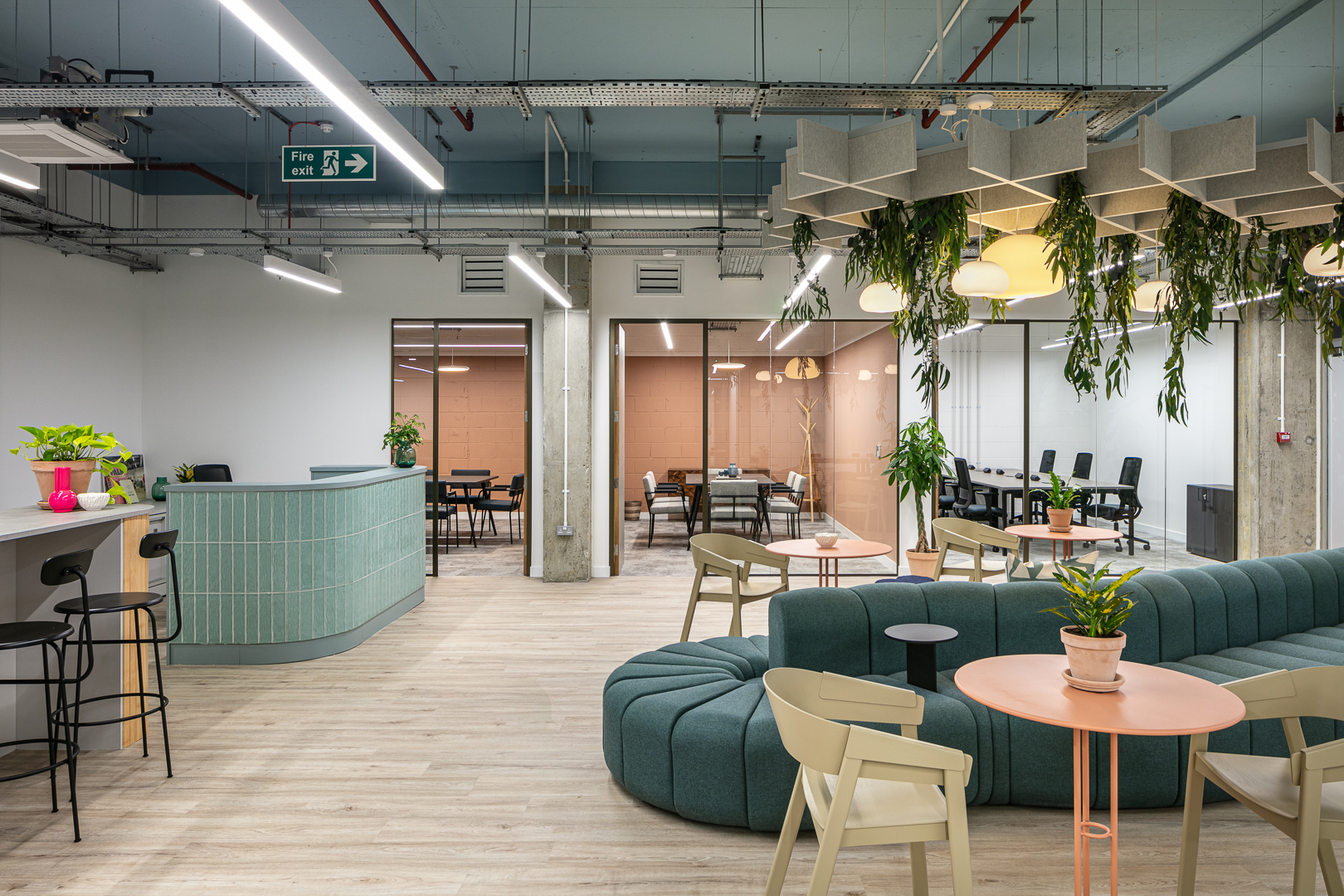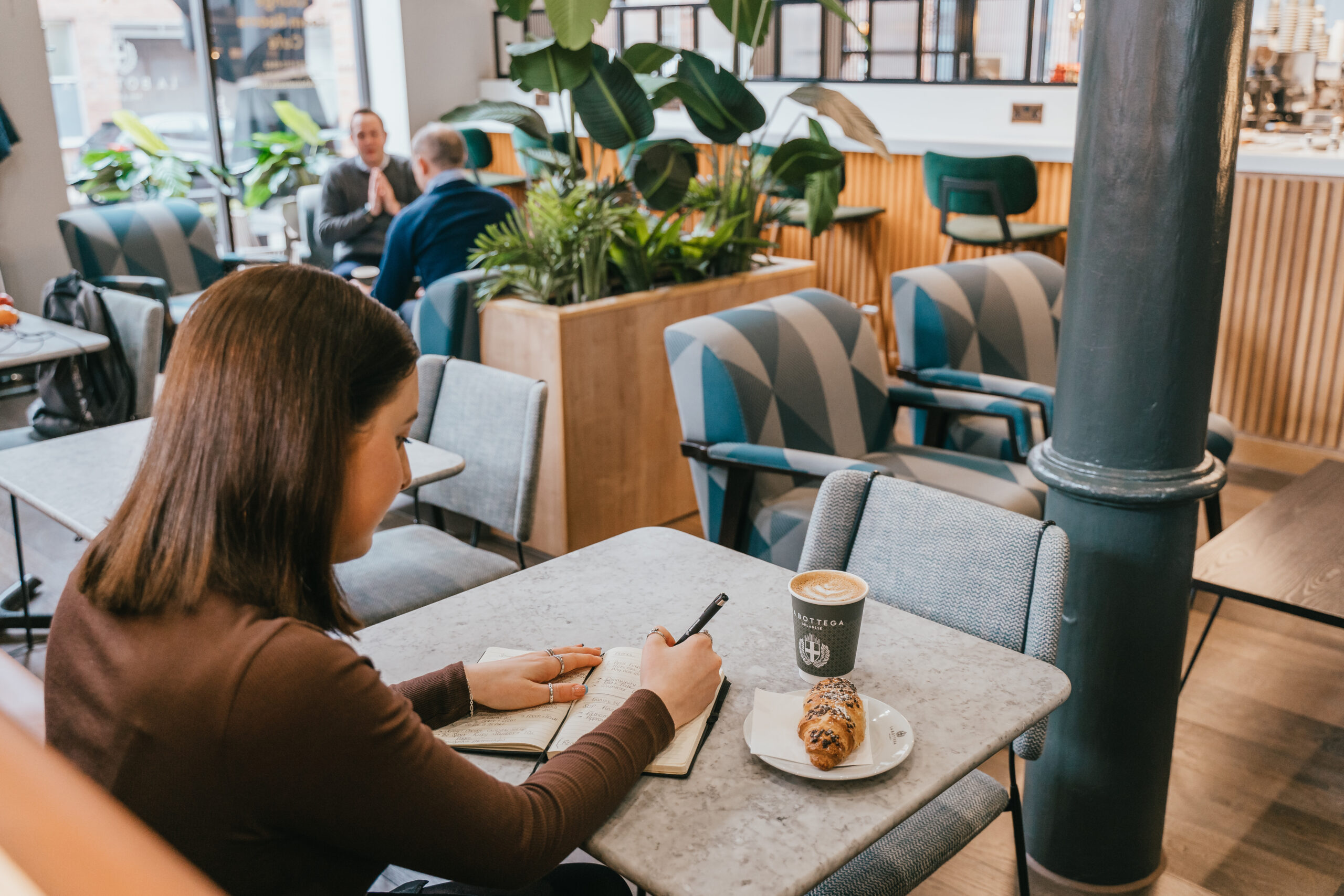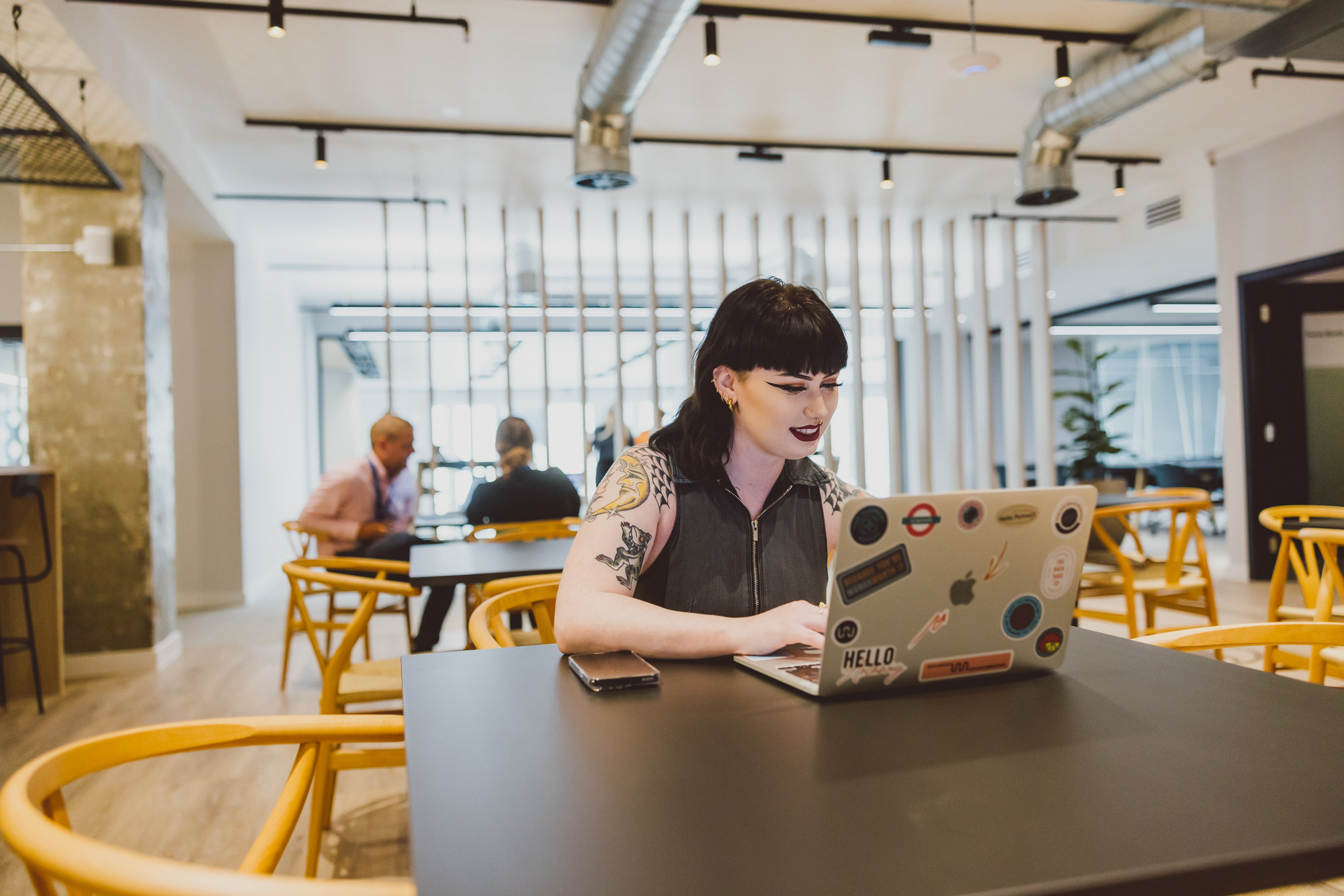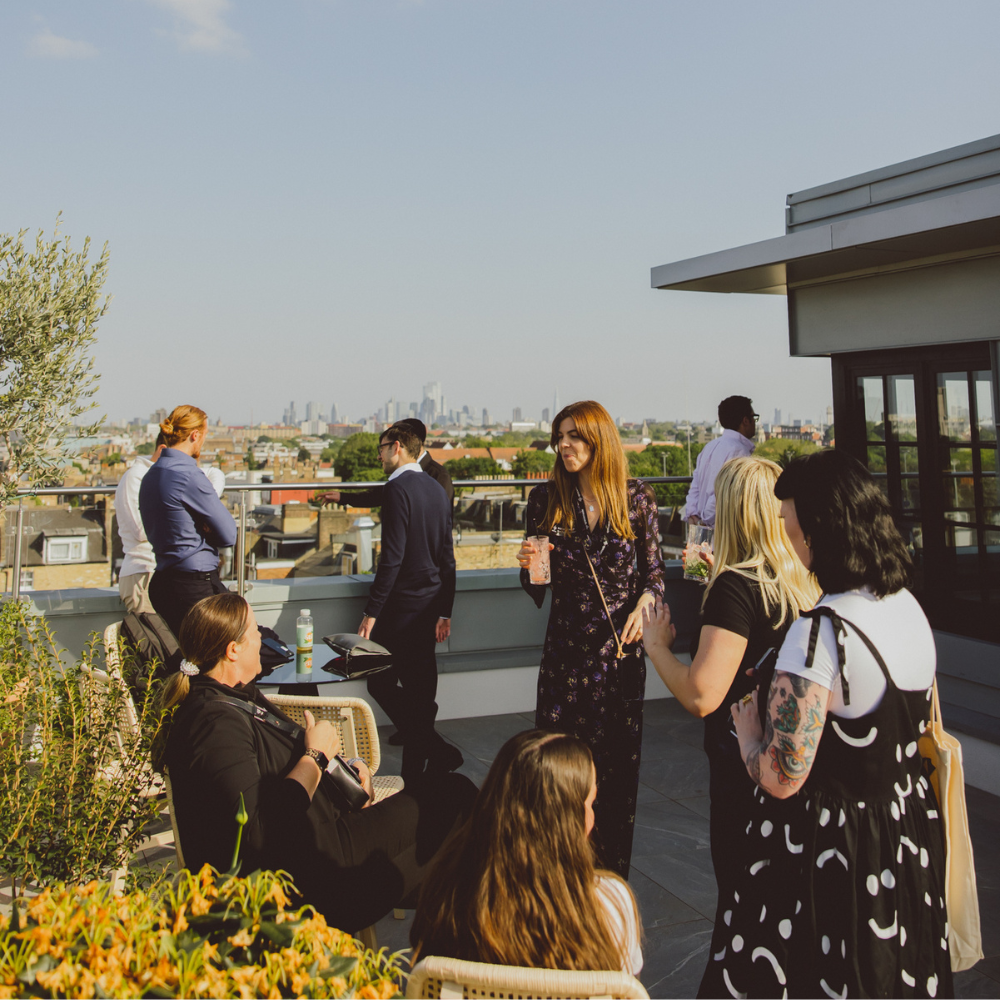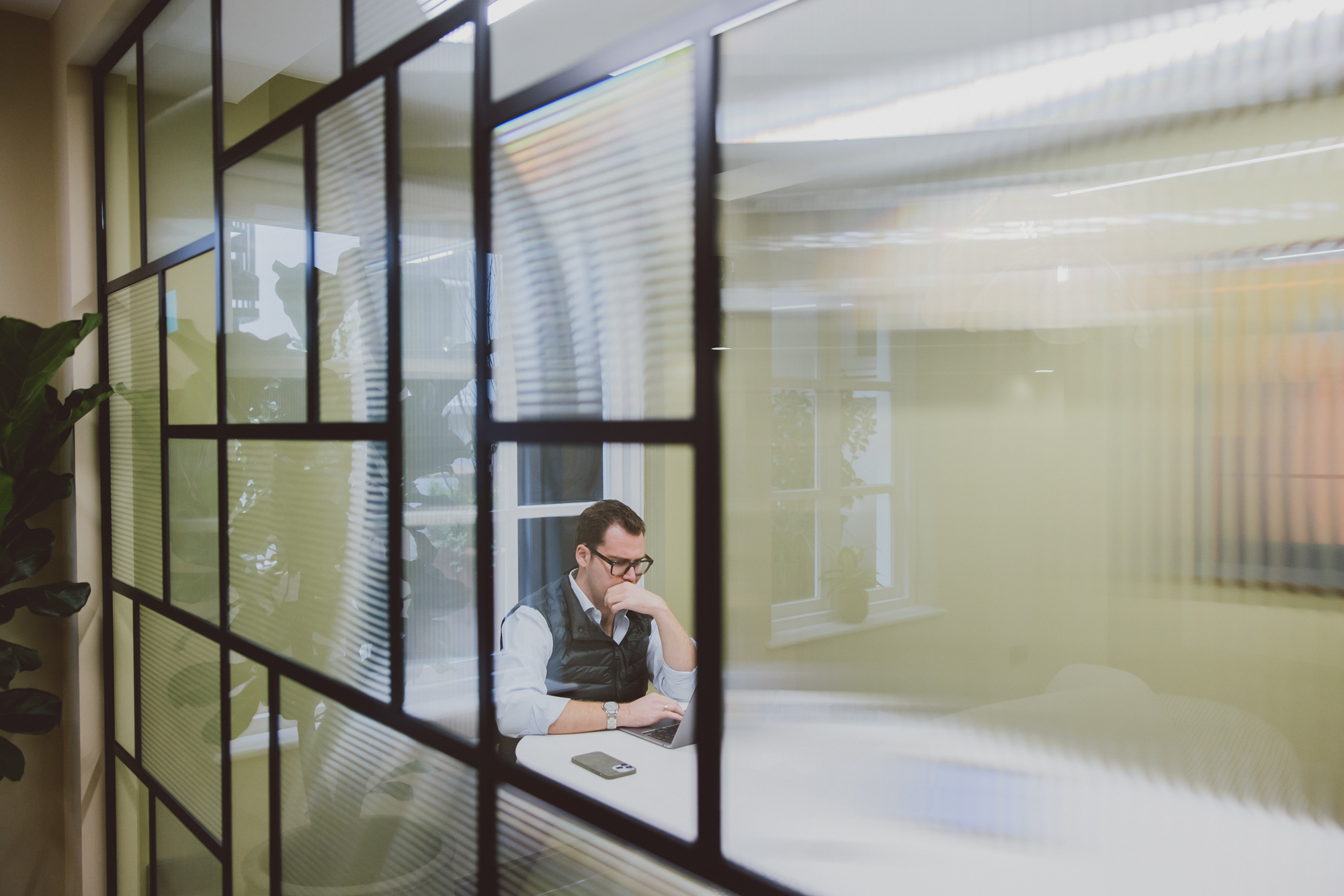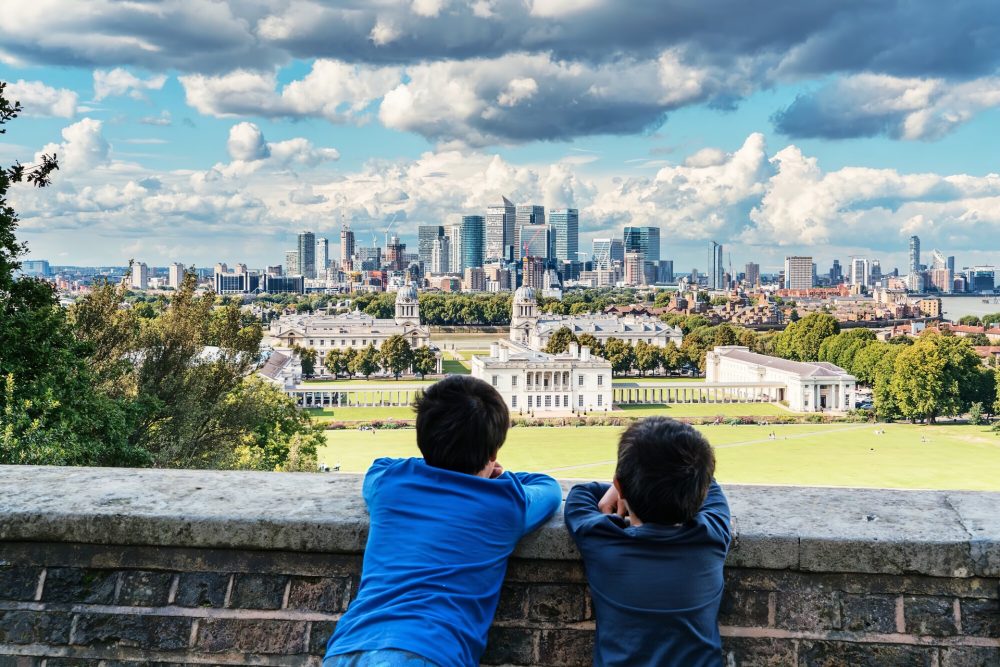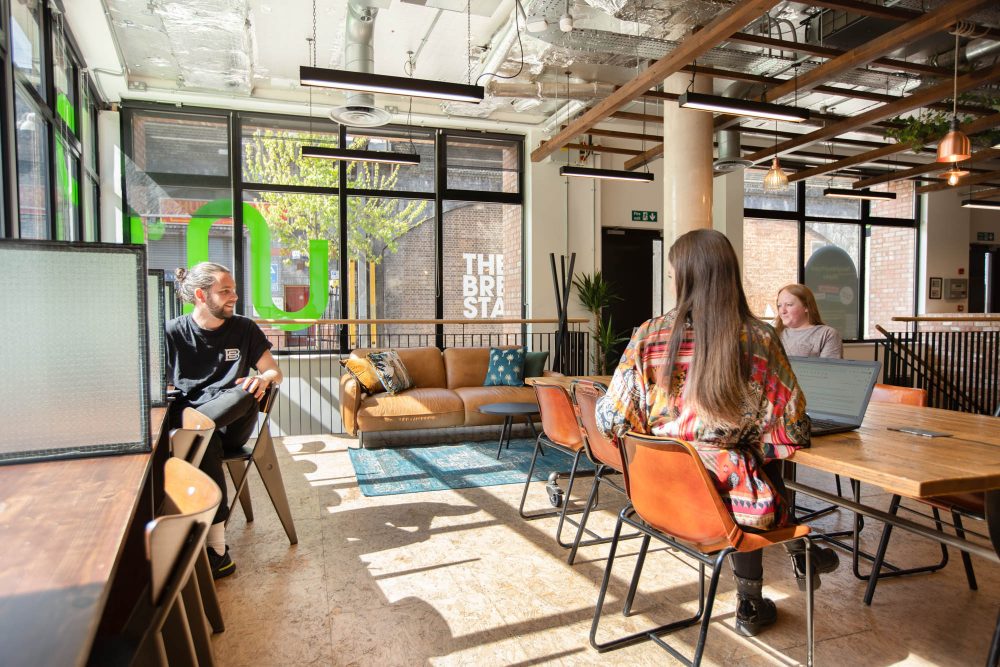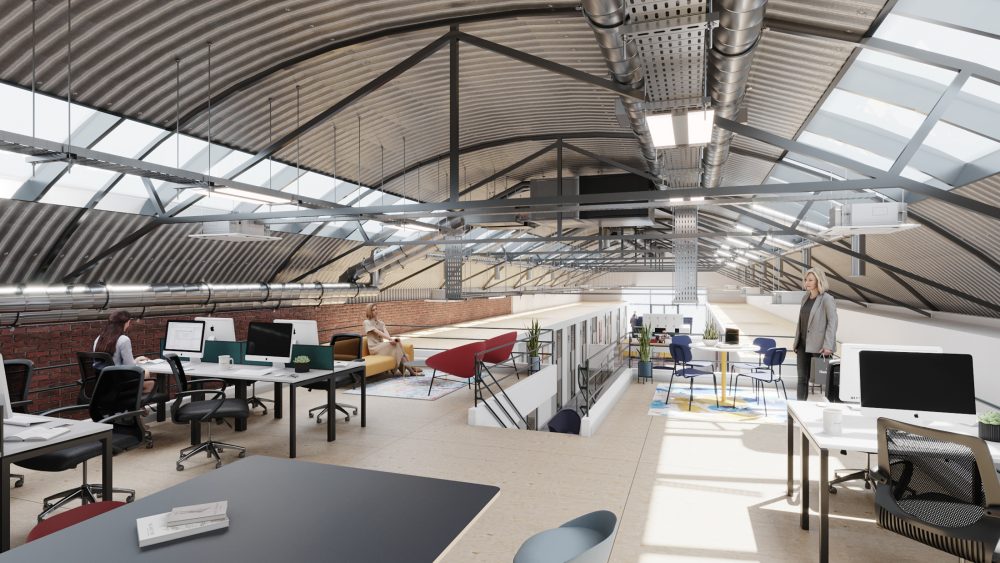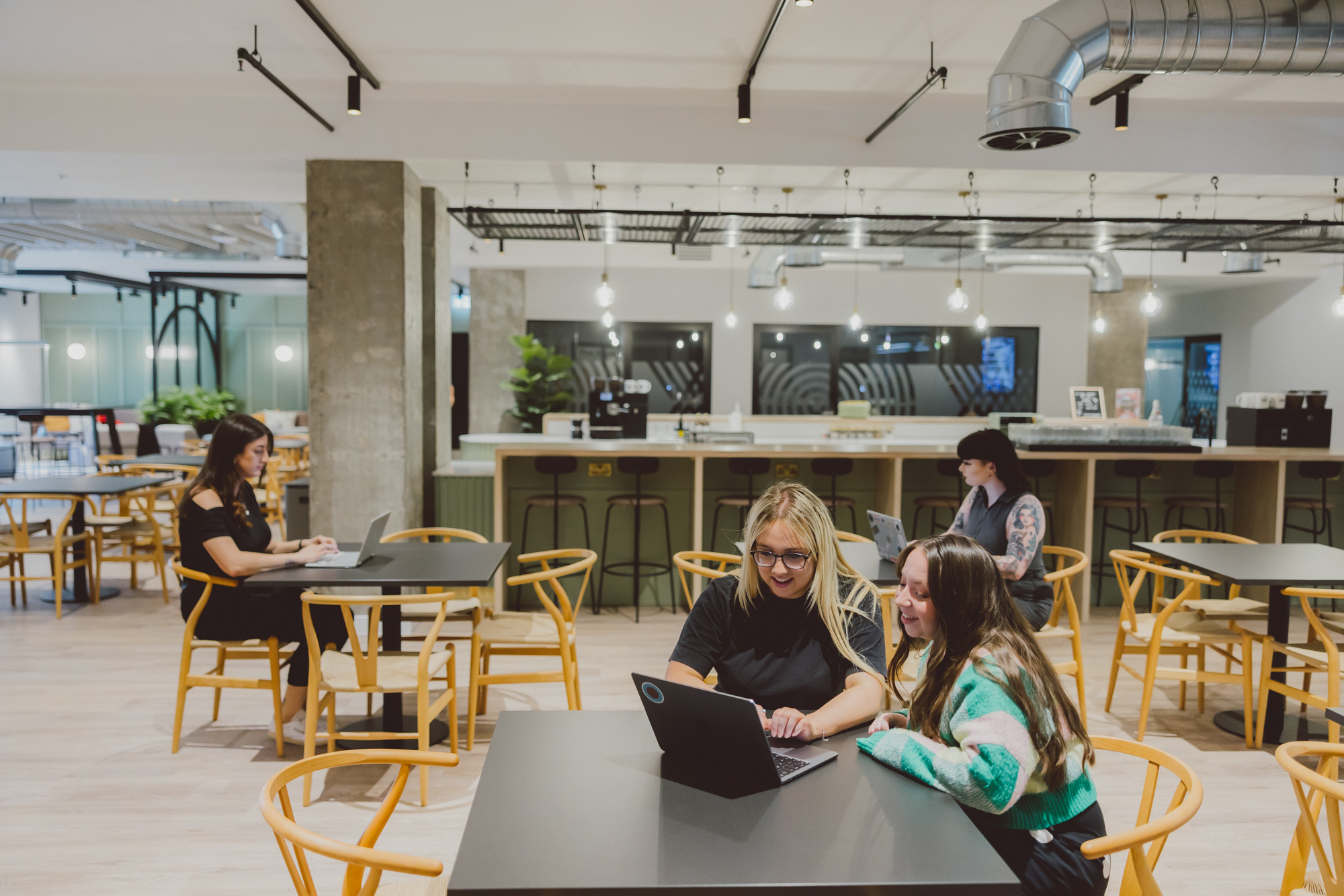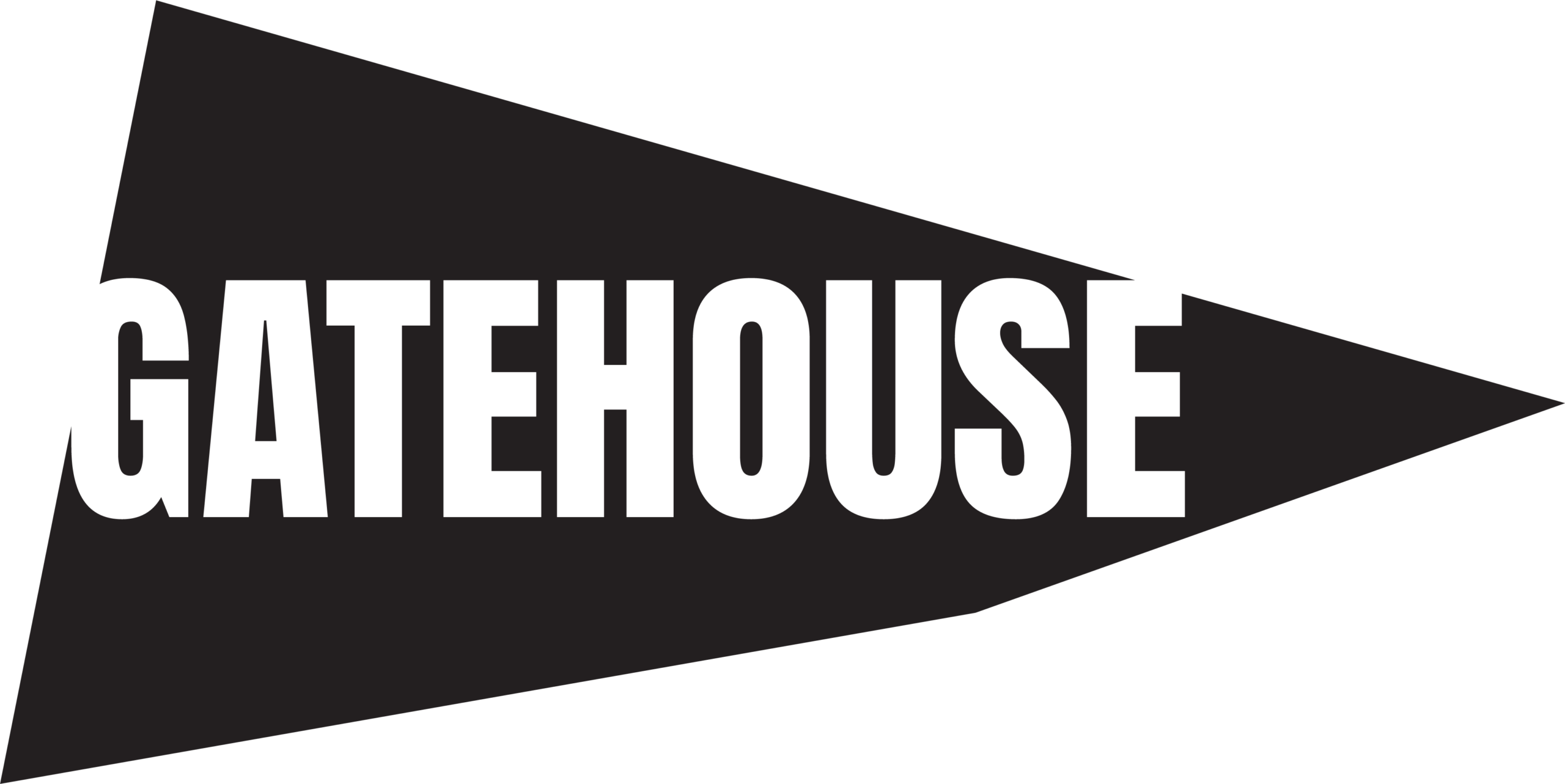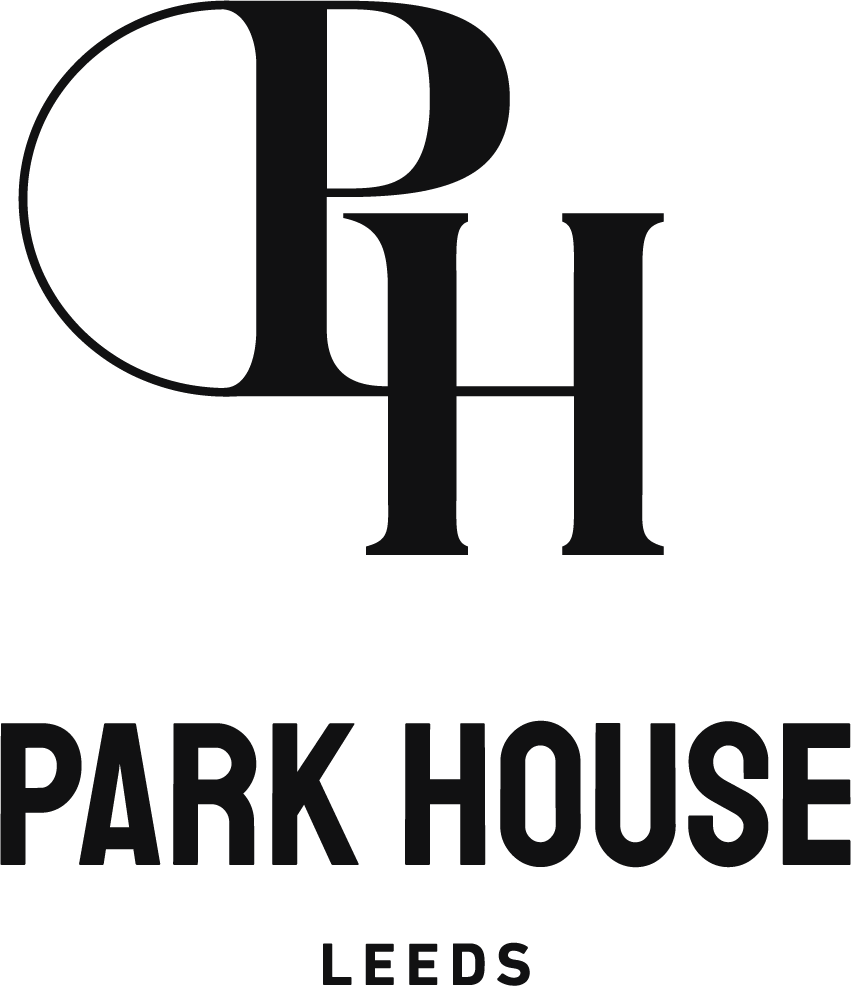
Building community in the workplace is the secret to success in 2025
The way we work has changed, and so have the expectations around it. People are no longer satisfied with workplaces where they feel disconnected or like just another cog in the machine. In an office, at home or in a coworking space, we all want to feel part of something bigger – a place where relationships matter, and where support is more than just an afterthought. More than half of adults are spending more time at home and less time socialising compared to pre-COVID levels – people are getting lonely.
Suddenly, the workplace has become more important on a personal and social level than it has ever been. However, 37% of people say the sense of community at work has reduced since the pandemic.
It’s clear, with hybrid working now the norm, many companies are struggling to maintain that sense of connection that comes naturally in office environments. Remote meetings, emails and Slack banter can only go so far. Building community in the workplace takes intention – it doesn’t just happen on its own.
If done correctly, you can bring together people with completely different backgrounds, interests and ways of working, but without intention, those connections won’t take root.
What is community in the workplace, and why is it important?
Community, in its simplest sense, is a group of people who share something in common. It’s a feeling of belonging and working towards a shared purpose. A workplace is naturally a community because it brings people together with common goals and responsibilities. However, not all communities function effectively.
For a workplace community to flourish, people need to feel they’re working together towards something meaningful. When employees connect with each other and share a clear purpose, it transforms the workplace into a space where people enjoy contributing and working together. This strong community spirit makes teams more adaptable and engaged in what they do.
The numbers back up the importance of community too. A 2023 study by the O.C Tanner Institute highlights the how business who score high on the Community Index get incredible outcomes, including; higher odds employees will be promoters of the business, a 100% improvement in employees being aspirational, a drastic increase in employee retention time, less chance of employees looking for another job and a 785% improvement in employees feeling like they belong.
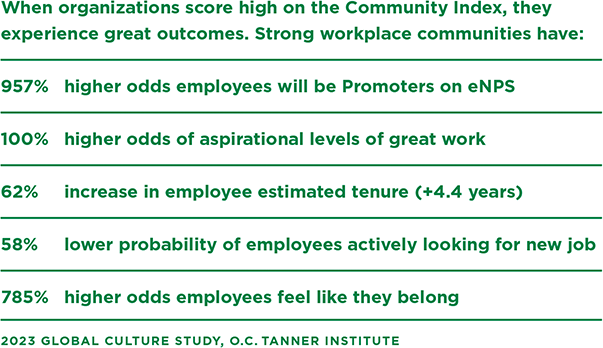
Positive effects of community on mental health
Feeling connected to others – whether through family, friends or a broader community – can greatly improve mental and physical wellbeing. People with strong social networks tend to be happier, healthier and more resilient, both physically and mentally. These meaningful connections also contribute to living longer, with fewer mental health challenges along the way. The one thing all communities in the world who live longest have in common is a sense of community (if you haven’t seen it, Live to 100: Secrets of the Blue Zones on Netflix is a great watch!).
For us, it wasn’t surprising to read that feelings of depression, anxiety and stress were almost twice as high in people who report a negative sense of community.
In the workplace, a strong sense of community supports employees in managing their mental health. When people feel valued and included, they are more likely to trust each other and feel less stressed. If you aspire to have a healthy and resilient workplace, community is the key.
How to Create Community in the Workplace

A sense of community doesn’t happen by accident. You can bring together people with completely different backgrounds, interests and ways of working, but without intention, those connections won’t take root. It’s not enough to hire great people and hope they naturally bond – building a community in the workplace requires deliberate effort. It takes thoughtful planning to create an environment where people feel welcome, connected and motivated to engage with each other. Below are some examples of community in the workplace and how you can implement them.
Make a diverse and inclusive work environment your priority
In the isolated lives we’re living, we often don’t interact with a range of people from different backgrounds and ages, but diversity and inclusion in the workplace means people can build connections they never would have otherwise.
It also helps businesses attract top talk and make more money with 76% of candidates looking for companies with diverse workforces and diverse companies being 35% more likely to outperform their competitors.
Enhance workplace culture through team-building activities
Team-building activities help people connect beyond their day-to-day tasks. People stop thinking about work and being judged on work-related performance. Instead, they can be themselves and forge bonds they otherwise wouldn’t have.
Solving a challenge together or just having a laugh helps break down barriers, making it easier for colleagues to build genuine relationships. A team that knows each other well works more smoothly, trusts each other more and communicates better.
It doesn’t have to be elaborate. You could try simple things like;
- Escape rooms
- Trivia nights
- Outdoor challenges
- Cook-offs or bake-offs
- Workplace Olympics
- Board game nights
- Team lunches or dinners
- Volunteering as a group
- Bowling nights
- Virtual games or quizzes for remote teams
- Creative workshops (like painting or pottery)
- Sports leagues or fitness challenges
These can’t just be one-off events though. They’ve got to be regular occurrences to create a stronger sense of community, one lunch or the dreaded pizza party isn’t going to cut it. When people enjoy working together, collaboration comes naturally, and the workplace culture thrives.
Encourage employee resource groups (ERGs)
Employee resource groups bring people with shared experiences or interests together, making the workplace feel more connected. These groups focus on things like mental health, sustainability or cultural identity and provide real support to employees.
A mental health ERG, for example, might organise drop-in sessions or offer peer support, giving employees a space to talk openly. A sustainability group could run recycling drives or set up volunteer days, helping people get involved in meaningful action.
These groups are like workplace communities, they make it easier for employees to connect across teams, share ideas and feel included while taking part in and supporting causes they care about.
Share knowledge with internal mentorship programmes
Mentorship programmes are a great way to connect employees across different roles and levels of the business. For junior team members, it’s a chance to learn directly from experienced colleagues, while mentors gain fresh ideas and perspectives. These programmes go beyond improving skills – they create connections that can lead to promotions and provide valuable insight into navigating the company.
Setting up a mentorship programme can be easy. Pair people based on their skills, interests or career goals and let them meet regularly. These sessions, when implemented correctly, help employees grow in their roles and form relationships that can influence their career progression.
Let collaboration thrive with group projects
Group projects are a great way to bring people together, encouraging teamwork and fresh ideas. Working with colleagues from different departments helps employees learn from each other and approach problems with new perspectives. Projects like improving processes or launching internal initiatives give people a shared goal to work towards, strengthening connections along the way.
This kind of collaboration helps people become more confident working with other teams and handling bigger projects. By encouraging employees to broaden their thinking outside their own role or department, they become more connected with decisions that will benefit the company as a whole. It’s another impactful way to help employees feel connected to the business on a deeper level.
Put on regular social events
Social events give employees the chance to connect beyond their usual workday, helping to build stronger relationships. Anything from a pub quiz to after-work drinks are informal settings that make it easy for people to get to know each other.
An informal social event you can encourage and people can easily fit into their existing routine is a lunch walking club.
Did you know, walking after eating is great for your health? It’s proven to boost mood, balance blood sugar, aid digestion and increase circulation. So, starting a post lunch walk club can make a huge difference to the workplace community and employee wellbeing. Instead of sitting there in a post-lunch slump, wanting nothing but a nap, people return to their desks energised after enjoying engaging conversations with colleagues and some fresh air.
Accommodate volunteer and charity initiatives
Giving employees the chance to get involved in volunteer work or charity events brings people together in new ways. Take part in a fundraiser or volunteer as a team to create a shared experience that goes beyond the office.
Being part of something meaningful boosts morale and helps build deeper connections. It shows that the workplace values more than just business goals. It values creating an environment where people feel good about what they’re contributing – both at work and in the world around them.
Open up communication channels
Starting simple things like dedicated Slack or Teams channels where people can share ideas, ask quick questions, or give feedback, can really improve how connected people feel at work. You could introduce something like a weekly “Open Mic” session where employees can raise any ideas or issues they want to discuss, or have a dedicated feedback platform where suggestions can be submitted anonymously.
When these communication spaces are active and accessible, collaboration feels natural. People will be more likely to bounce ideas around, feel in the loop and engage with one another. This helps create a more transparent and trusting environment where people feel part of the team and comfortable contributing.
Openly recognise and reward employees
Who doesn’t love a bit of public recognition for their hard work? A quick thank-you in a meeting or a small reward can make a huge difference. When people know their efforts are seen and appreciated, they’re more likely to stay motivated and engaged.
It doesn’t need to be over the top – a shout-out in the team chat or a thoughtful message can go a long way. A culture that celebrates wins, big or small, helps people feel valued and proud to be part of the team.
Initiate wellness programmes
Creating a workplace where employees feel energised and appreciated leads to better focus, engagement and an improved ability to handle challenges. When physical and mental health are prioritised, people are more motivated and productive.
To bring this focus on wellbeing into your workplace, try these ideas:
- Desk stretch breaks: Offer short guided stretches during the day to ease tension
- Hydration challenges: Encourage employees to track their water intake and hit hydration goals
- Mental health reset: Set aside time, around 1 hour, once a week for employees to focus on relaxation techniques or simply enjoy a break from work pressures
Ensure there is plenty of feedback and opportunity for development
People do their best work when they know where they stand and how they can improve. Regular feedback through one-to-one meetings or casual check-ins helps employees feel supported and stay on track. Offering clear development opportunities shows that the company values their growth, keeping them motivated and engaged.
Open conversations about progress and future goals also build trust within teams. When employees feel heard and see a path for growth, they’re more likely to stay connected to their work and the people around them.
Coworking spaces can help workplace communities thrive

Building community in the virtual workplace isn’t always easy, but coworking spaces provide the ideal environment for connections to grow naturally. Often, employees and teams that work remotely are more productive, but they don’t feel the same sense of community as their office-based counterparts.
Whether you’re a freelancer, employee or manage a remote team, co-working spaces give you all of the benefits of working remotely and fuse them with the positives of being in an office.
How coworking spaces build thriving communities:
- Open layouts and communal areas make it easy for people to connect during the workday, even if it’s just over a coffee or while working on projects side by side.
- Regular social and networking events give members the chance to get to know each other, forming friendships and creating business opportunities.
- A mix of industries working together promotes both personal and professional relationships, sparking collaborations that might not happen elsewhere.
- The flexibility of coworking spaces means people can engage on their own terms, no matter if they’re working full-time or dropping in occasionally.
- Regular contact within a familiar environment builds trust over time, fostering a stronger sense of community among members.
The perfect space awaits
Spacemade offers coworking spaces across cities in the UK, all located near major transport links for easy access. Need a desk for the day, a dedicated spot to call your own or a flexible space for your team to meet up and work together? There’s something to suit every way of working.
Our spaces are designed to make collaboration easy, with professionals from all industries working side by side. Regular events, like wine tastings and meetups, give people the chance to connect in a more relaxed setting. From hot desking to using the space as a team hub, Spacemade makes it easy to work, connect, and build relationships that last.
Not sold yet? Get a free Spacemade day pass to see for yourself.
